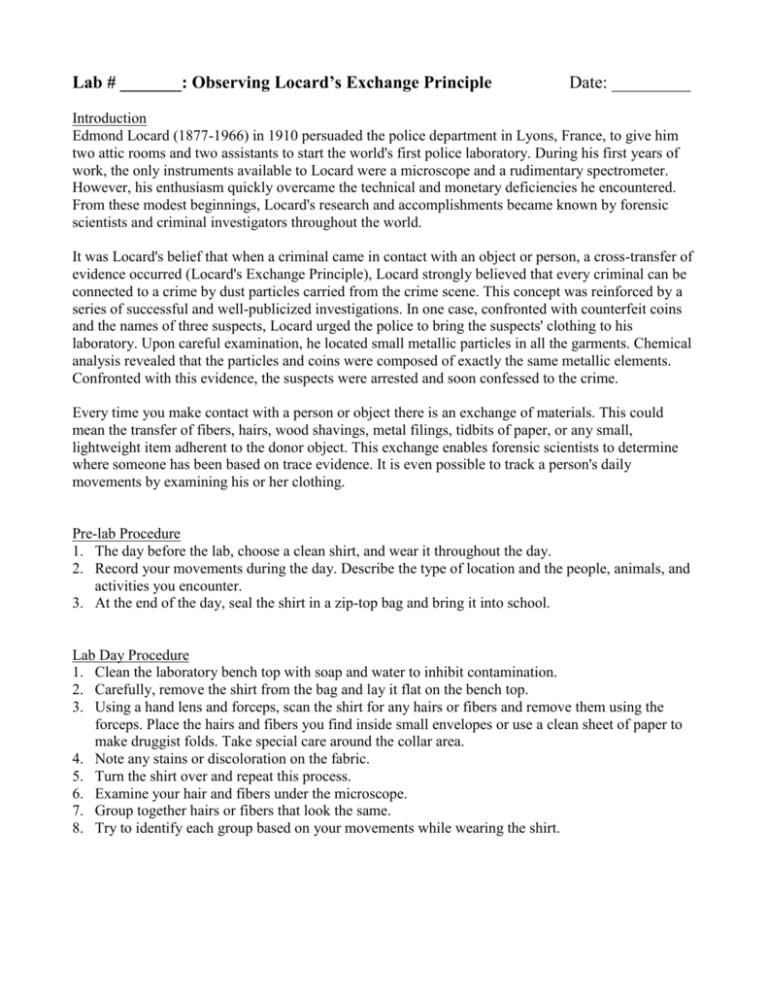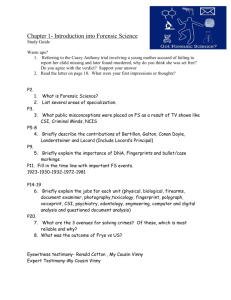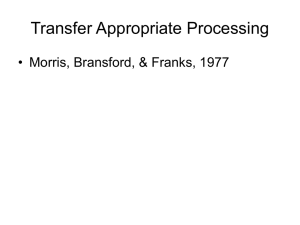Lab # ______: Observing Locard`s Exchange Principle
advertisement

Lab # _______: Observing Locard’s Exchange Principle Date: _________ Introduction Edmond Locard (1877-1966) in 1910 persuaded the police department in Lyons, France, to give him two attic rooms and two assistants to start the world's first police laboratory. During his first years of work, the only instruments available to Locard were a microscope and a rudimentary spectrometer. However, his enthusiasm quickly overcame the technical and monetary deficiencies he encountered. From these modest beginnings, Locard's research and accomplishments became known by forensic scientists and criminal investigators throughout the world. It was Locard's belief that when a criminal came in contact with an object or person, a cross-transfer of evidence occurred (Locard's Exchange Principle), Locard strongly believed that every criminal can be connected to a crime by dust particles carried from the crime scene. This concept was reinforced by a series of successful and well-publicized investigations. In one case, confronted with counterfeit coins and the names of three suspects, Locard urged the police to bring the suspects' clothing to his laboratory. Upon careful examination, he located small metallic particles in all the garments. Chemical analysis revealed that the particles and coins were composed of exactly the same metallic elements. Confronted with this evidence, the suspects were arrested and soon confessed to the crime. Every time you make contact with a person or object there is an exchange of materials. This could mean the transfer of fibers, hairs, wood shavings, metal filings, tidbits of paper, or any small, lightweight item adherent to the donor object. This exchange enables forensic scientists to determine where someone has been based on trace evidence. It is even possible to track a person's daily movements by examining his or her clothing. Pre-lab Procedure 1. The day before the lab, choose a clean shirt, and wear it throughout the day. 2. Record your movements during the day. Describe the type of location and the people, animals, and activities you encounter. 3. At the end of the day, seal the shirt in a zip-top bag and bring it into school. Lab Day Procedure 1. Clean the laboratory bench top with soap and water to inhibit contamination. 2. Carefully, remove the shirt from the bag and lay it flat on the bench top. 3. Using a hand lens and forceps, scan the shirt for any hairs or fibers and remove them using the forceps. Place the hairs and fibers you find inside small envelopes or use a clean sheet of paper to make druggist folds. Take special care around the collar area. 4. Note any stains or discoloration on the fabric. 5. Turn the shirt over and repeat this process. 6. Examine your hair and fibers under the microscope. 7. Group together hairs or fibers that look the same. 8. Try to identify each group based on your movements while wearing the shirt. Questions 1. Make a chart relating each sample you found on your shirt to one of your activities while wearing the shirt. (If there are some samples that don’t seem to relate to any of your activities, list them with a ? beside them.) 2. Make a hypothesis about how hairs or fibers that don’t seem to relate to your activities could have gotten onto your shirt.








